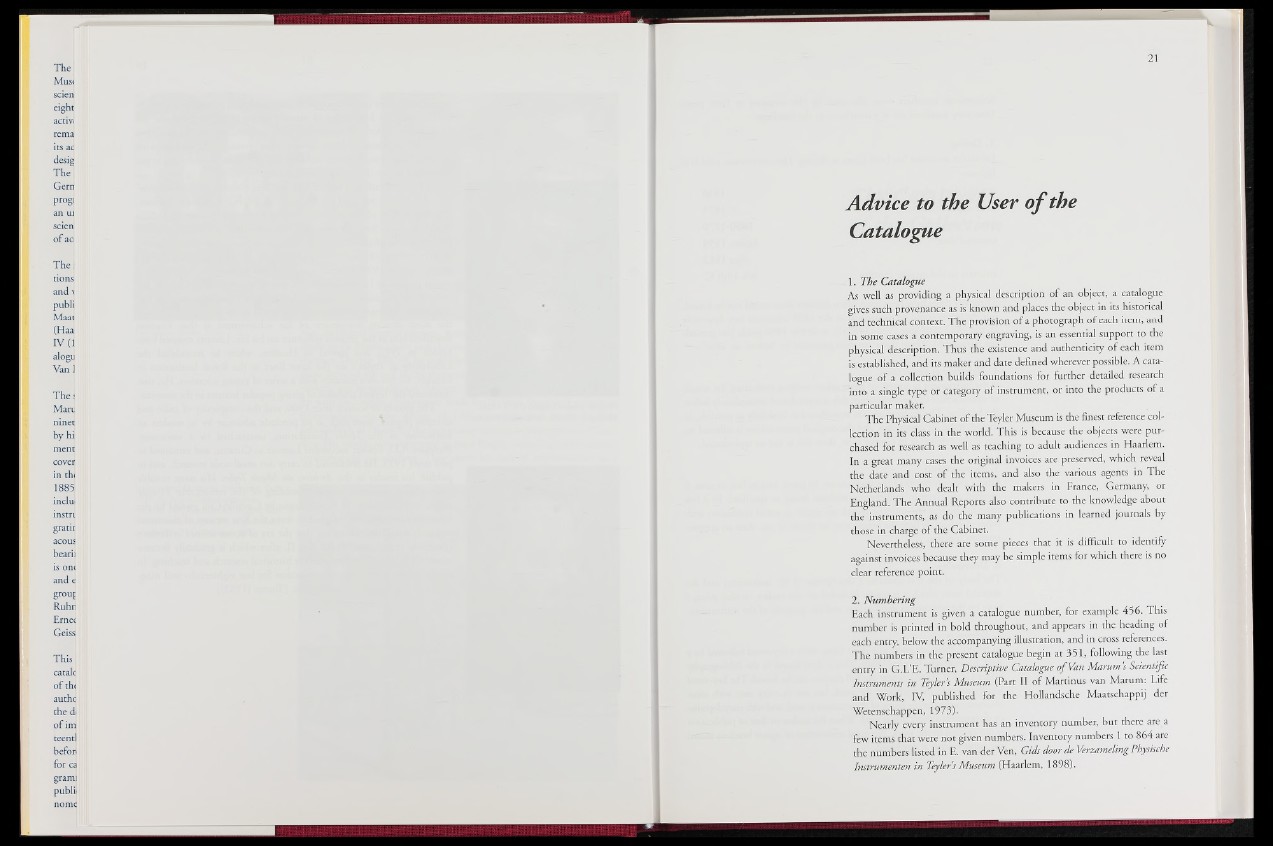
The
Mus<
scien
eight
activi
rema
its ac
desig
The!
Gem
progi
an ui
scien
of ao
The:
tions
and ^
publi
Maat
(Haa
IV (1
alogu
Van ]
The!
Mari
ninet
by hi
ment
cover
in tht
1885
incili
instri
gratir
acous
bearij
is on<
and e
grouf
Ruhn
Emec
Geiss
This |
catalc
of th<
authc
the dl
of im
teend
befon
for ca
grami
publi)
Advice to the User o f the
Catalogue
1. The Catalogue
As well as providing a physical description of an object, a catalogue
gives such provenance as is known and places the object in its histpti|||j||
and technical context. The provision of a photograph of each item, and
in some cases a pontemporary engraving, is an essential support to the
physical description. Thus the existence and authenticity of each item
$ established, and its maker and date defined wherever possible. A catalogue
of a coll^fidn builds foundations for further detailed research
■ 'into a single, type or category of instrument, or into the products of a
particular maker.
The Physical Cabinet of theTeyler Museum is the finest reference cojs
"lection in its class in the world. This is because the objects were purchased
for research as well as teaching to adult audiences in Haarlem.
In a great many cases the original invoices are preserved, which reveal
the date and cost of the items, and also the various agents in The
Netherlands who dealt with the makers in France, Germany, or
F.nglsnd The Annual Repofi also contribute to the knowledge about
the instruments," as do the many publications in learned journals by
those in charge of the Cabinet.
Nevertheless, there are some pieces that it is difficult to identify
against invoices because they may be simple items for which there is no
B:lear reference point.
2. Numbering
Each instrument is given a catalogue number, for example 456. This
number is print*)! in bold throughout, and appears i n | | e heading of
each entry, below the accompanying illustration, and iincross references.
The numbers in the present catalogue begin at 351, Showing the last
entry in G.L'E. Turner, Descriptive Catalogue o f Van Marum s Scientific
Instruments in Teyler's Museum (Part Hfjjljf Martinus van Marum. Life
and Work, IV, published forShe Hollandsche Maatschappij der
Wetenschappen, 1973).
’ Nearly every instrument has an inventory number, but there are a
few items that were not given numbers. Inventory numbers 1 to 864 are
the numbers listed in E. van der Ven, Gids door de VerzamelingPhysische
Instrumenten in Teyler's Museum (Haarlem, 1898).